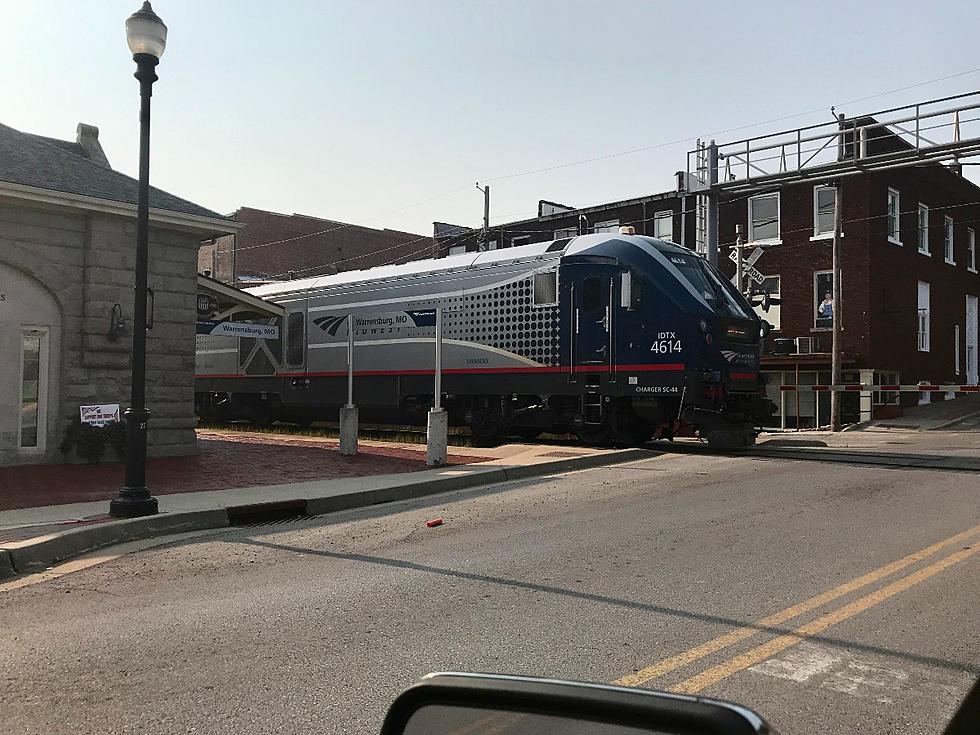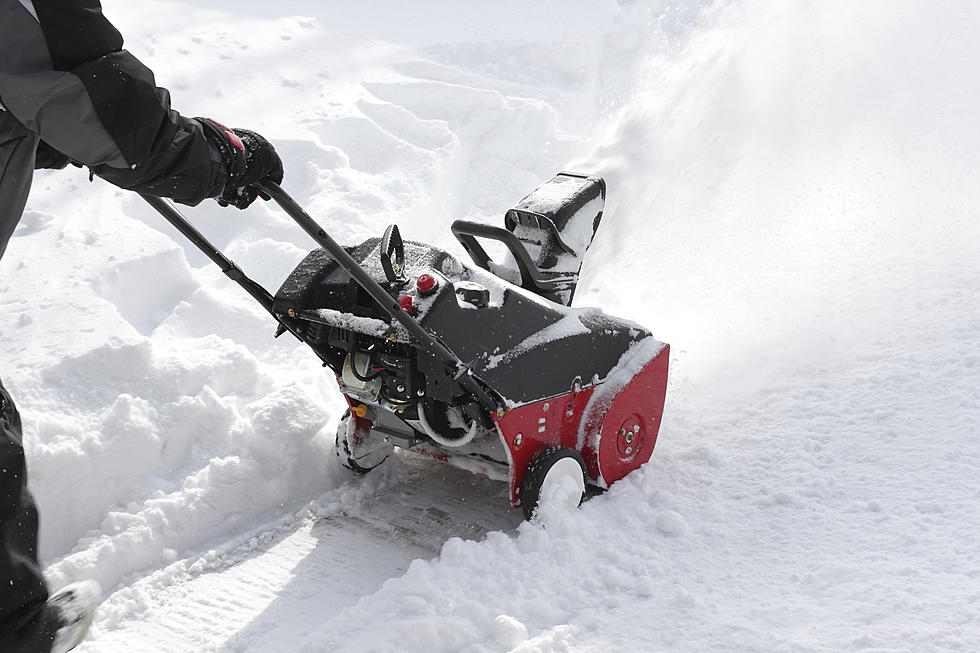
Missouri Struggles to Control Growing Feral Hog Problem
With final puffs of steamy breath coming from its slightly tusked snout, the second boar collapsed at the edge of the trap, right next to the other.
Two fewer targets in Missouri’s fight against invasive feral hogs.
Felled by well-placed gunshots, together the two formed a hairy black heap of perhaps 400 pounds or more — animals that, before meeting their demise, were destructive outsiders among the surrounding patches of farmland and thick Ozark forests.
But the scene that unfolded recently on Jerry Richards’ farm in remote Washington County, about 80 miles southwest of St. Louis, represents an all-too-elusive payout for the property owners and government officials working to contain the introduced species.
In recent years, feral hogs have been a growing problem in Missouri — causing damage to property and farms, competing with native species, and harboring diseases that could threaten domesticated pigs. But the on-the-ground fight to control them is an unforgiving scramble against their smarts, their prolific ability to multiply, and the people who introduce them to the state.
It’s hard enough to simply keep the population at bay, let alone dent it, explains Tom Meister, a wildlife damage biologist for the Missouri Department of Conservation and the lead coordinator of hog control efforts across an 18-county area that includes the St. Louis region.
Female hogs, or sows, can have three litters per year and start breeding at just 6 months old. “Studies show that you need to kill 80 percent of them just to maintain the population,” Meister said.
He told the St. Louis Post-Dispatch that he believes the hog population in Missouri is higher than ever, with the species largely found south of Interstate 44 and especially prevalent in southeast Missouri. And even though the MDC reports that more than 9,300 feral hogs were killed in the state last year — a more than 40 percent jump from the 6,500 killed in 2017 — it’s difficult to gauge whether control efforts are working to reverse the tide.
“I’d like to think there’s a significant impact, but there’s no way to tell for sure,” Meister said.
The fight is spearheaded by individual landowners who partner with MDC officials and partner agencies, such as a team of about 20 hog-trapping specialists who work for the U.S. Department of Agriculture.
“They’ve got trappers that are ganging up on these counties and these hot spots,” said Meister, discussing the USDA’s involvement.
“These feral hogs have so many nasty diseases,” he added, rattling off brucellosis, pseudorabies and trichinosis as examples commonly carried by feral swine. “If they got to the domestic livestock, it’d be huge. And they don’t want that to happen, so that’s why they got involved.”
Although feral hogs are a nuisance throughout the southern U.S., that’s not where Missouri’s population is coming from, Meister said.
“They’re definitely not migrating,” he said. “They’re either escapees or purposely released.”
Therein lies one of the biggest complications in the battle to control the species: the simultaneous, and perhaps harder-to-wage fight against individuals from whom the problem originates.
Meister explains that some people have deliberately released hogs “to sell hunts,” while other animals have escaped from private game farms.
He even recalls seeing billboards along I-44 in recent years advertising hog hunts. But even though escapees are likely at the root of the state’s feral hog problem, there’s little that officials can do to prevent that kind of behavior, Meister said.
“Basically, you can do what you want on your own private land,” he said.
Where officials like Meister and MDC’s “feral hog strike team” can make strides is through trapping — not hunting — sounders, or groups, of the hogs.
The distinction is key.
“If you kill one or two, then that may break the sounder up, and then you’ve got two groups,” said Jeromy Boze, an MDC wildlife crew leader and strike team member, explaining why the agency doesn’t want to allow or encourage hunting.
Trapping, though, faces its own challenges. Fail to catch a whole group, and even a couple loose hogs can mean a continued problem — plus they’re smart enough to learn from the experience.
“You’re hoping to catch the whole sounder. Because they breed like rabbits,” Boze said. “If you have one escape a trap, I’m not sure you’d ever get them in the same style trap again.”
Drop traps — circular units of metal fencing that, when triggered, fall and surround bait-eating hogs from above — represent the latest method of choice at the MDC.
“The thinking goes that the hogs don’t see them because they don’t have any overhead predators,” Meister said. “They’ll be looking at the corn (spread on the ground, as bait), not at the trap.”
Other traps can be used, such as on-the-ground corral traps with gates that drop like a guillotine.
On a recent January day, Meister, Boze and a crew of MDC employees set up traps on the property of private landowners affected by hog damage — often in the form of massive divots made by hogs as they root through the ground.
One trap went to Richards, a teacher who farms and raises cattle on 515 acres almost entirely surrounded by the Mark Twain National Forest. With few people and roads around, Meister said it’s the type of area hogs like, and Richards’ land has patches of fresh hog damage to prove it.
“I discovered that I had a problem in mid-December,” said Richards. “I knew the problem was coming up this direction. ... It was just one of those things that hadn’t hit me.”
While hog damage can take a toll on pasture land, Richards worries that it could prove costly if it hurts his hay equipment in warmer months.
“It’s like if someone left mounds of dirt in your yard and you’re trying to go through with your mower,” Richards said. “Then you get big rocks where you’re trying to get your cutters through.”
The trap on Richards’ land was set up next to a spot of new, intense damage. On one side near the center of the trap, generous amounts of cracked corn were poured on the ground as bait. Table scraps and even the remains of other hogs can also be used to lure them in. Less bait was sprinkled on the trigger side of the trap, in the hope that an entire sounder would be gorging themselves by the time one of its members bumped the trigger on the less desirable side of the buffet.
Not far away, another trap was set up on Bob Scanlon’s land, where deep ruts from hogs prevented a large chunk of field from being used for hay production.
“We only hayed maybe a third of it this year,” said Scanlon, estimating that the loss on that field alone cost him about 40 bales — a total he said, at around $50 each, would amount to a couple thousand dollars.
Patience is key to catching hogs — even in places like Richards’ farm that appear to be “hot” with activity. The wait can pay off handsomely, at times.
Meister said they’ve caught individual hogs weighing up to 500 pounds. And one time, 24 hogs were caught in a single trap.
“He had so many, they ran out of ammo,” said Meister, adding that the landowner needed to go borrow ammunition from the neighbors.
On certain occasions, hog control is a job for marksmen in a helicopter. Those aerial hog hunts are carried out in the winter — when there are no leaves on the trees, nor hunters out for deer season.
“We will only do that if we know there’s a bunch,” Meister said.
What happens to the wild hogs after they are captured is up to the landowners. Though there may be interest in eating them, their lack of fat means it’s not always the tasty pork-like delicacy that many may envision — especially with bigger, older hogs that get tougher with age.
Though he has eaten plenty of it since, Meister recounts the rude introduction he received to feral hog meat.
“I’m serious, I had to throw the frying pan away,” he said. “It was this dry, nasty, gamey meat.”
But the state can’t eat its way to eradication, especially with control efforts undermined by the promotion of commercial hog hunting.
Meister said the desire to hunt them might have been stoked by television.
“For a while, these hog-hunting shows were really popular,” said Meister, who thinks they succeeded in “glamorizing it and making it look like it was the coolest thing.”
Instead, he said, hog hunting has a strong, negative effect on the outdoors — not just for property owners, but for popular game species such as deer and turkeys.
“The impact that they have on the other wildlife is so detrimental,” Meister said. Although hogs primarily eat acorns, they’re opportunists that will consume just about anything. “They’re eating fawns, they’re eating turkey eggs. Anything on the ground, they’re eating it.”
Meister sees improvement in getting the public to buy into the MDC’s strategy of targeting hogs through trapping instead of hunting. While it can seem counterintuitive to some, Meister said sentiment is “coming around” and getting better each year.
Back on Richards’ farm recently, the two boars were loaded onto the bed of a pickup, destined for a local resident who wanted the meat.
Catching two grown males together is unusual, said Greg Turnbough, a member of the MDC strike team who lives nearby and responded to the scene.
“I think this cold snap has just got them out looking for food,” he said.
After a few weeks of waiting, Richards was glad to finally have something to show for the trap.
“I was hoping to get something, because, my God, they tear a lot of stuff up,” he said.
More could be on the way. The trap was reset, with new corn and some pelleted cattle feed joining the bloodstains inside of it — another ingredient that could coax hogs in.
“They’ll eat each other,” said James Grimm, another strike team member. “A little blood might make them want to come back.”
More From AM 1050 KSIS









